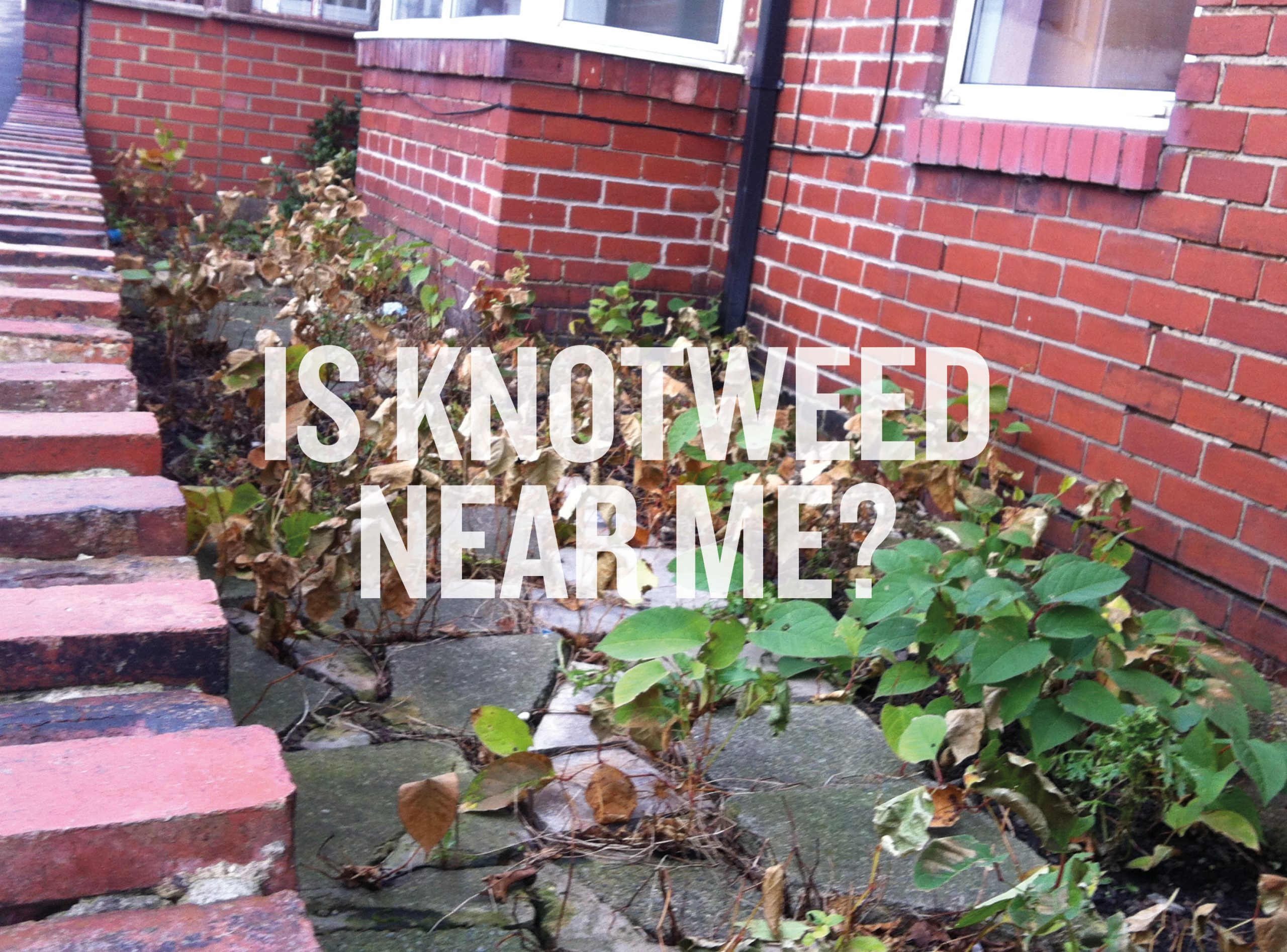Knotweed is all over the UK, but Is knotweed near you?
This is a common question, you’ll see it all over the internet, asked by individuals, businesses and commercial companies. So this article addresses that concern as we explore where knotweed thrives, where there are hotspots of UK knotweed and what to look out for so you can spot it.
Where does knotweed grow?
The quick answer is knotweed can pretty much grow anywhere! Look around you and you’ll see a place that knotweed could grow – and will if allowed to. Being a non-native plant that originated from Japan, Taiwan and northern China, its genetics means it can survive different climates and terrains to the UK. In fact Japanese knotweed has been found growing on active volcanoes as well as frozen landscapes. These advantageous adaptive traits make it both massively successful at thriving here in the UK but also a huge threat to our native plants and biodiversity in general.
So let’s get more specific about exactly where knotweed will grow. Being a rhizomatous plant it needs soil, but it can grow in most soil conditions and is most likely to grow near water (riparian areas such as wetlands). That being said, knotweed is most commonly found near or on roadsides, railway embankments, waste ground, and spoil tips.
Why is knotweed found in residential gardens?
The simple reason is knotweed spreads via its underground root system (rhizomes) and it will grown under, through or in between any weak areas or gaps, including residential barriers such as fences and brick walls. So just because the above ground plant is visible in a neighbouring garden or field, the chances that it’s coming for you are high! You may not spot it yet, but underground the roots could be making their way to your property. The risk of knotweed encroaching onto your property are made even higher if any ground near the roots are disturbed, as fragments of root can then establish new plants, with new root systems.
Why is knotweed prevalent in urban areas?
Knotweed knows no boundaries, it will grow wherever it can. Urban areas especially car parks and industrial sites are often used for fly-tipping or just have general waste build up. Knotweed loves this type of environment and will happily thrive there.
Why is knotweed found in the wild?
Again, there’s a simple answer to this – it’s been allowed to enter the wild by several processes; illegal planting, incorrect disposal or being allowed to spread outside a property boundary (in other words – not contained). Once in the wild it will quickly form dense stands that out compete other species battling to survive.
In conclusion
To answer the question is knotweed near you – yes it most likely is. There are hotspots in most areas of the UK which tend to be cities or towns where expansion/construction has taken place but also non-urban areas (open countryside) and brownfield sites. If we had to narrow it down to the top 5 hot spots on fire we’d say London, Birmingham, Kent the northwest of England and vast swathes of Wales.
The key to knowing if knotweed is near you is to know what it looks like – or get a professional contractor in to accurately identify it. So here’s our top tips for identifying Japanese knotweed in summer.
What does knotweed look like?
Japanese knotweed can be a stand alone plant, or grow among other plants, so it’s best to get up close and look at the 2 key characteristics that make it undeniably Japanese knotweed – it’s leaves and flowers. It also looks completely different in each season, but for now here’s what these 2 characteristics look like in summer.
Knotweed flowers
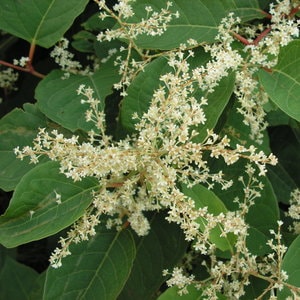
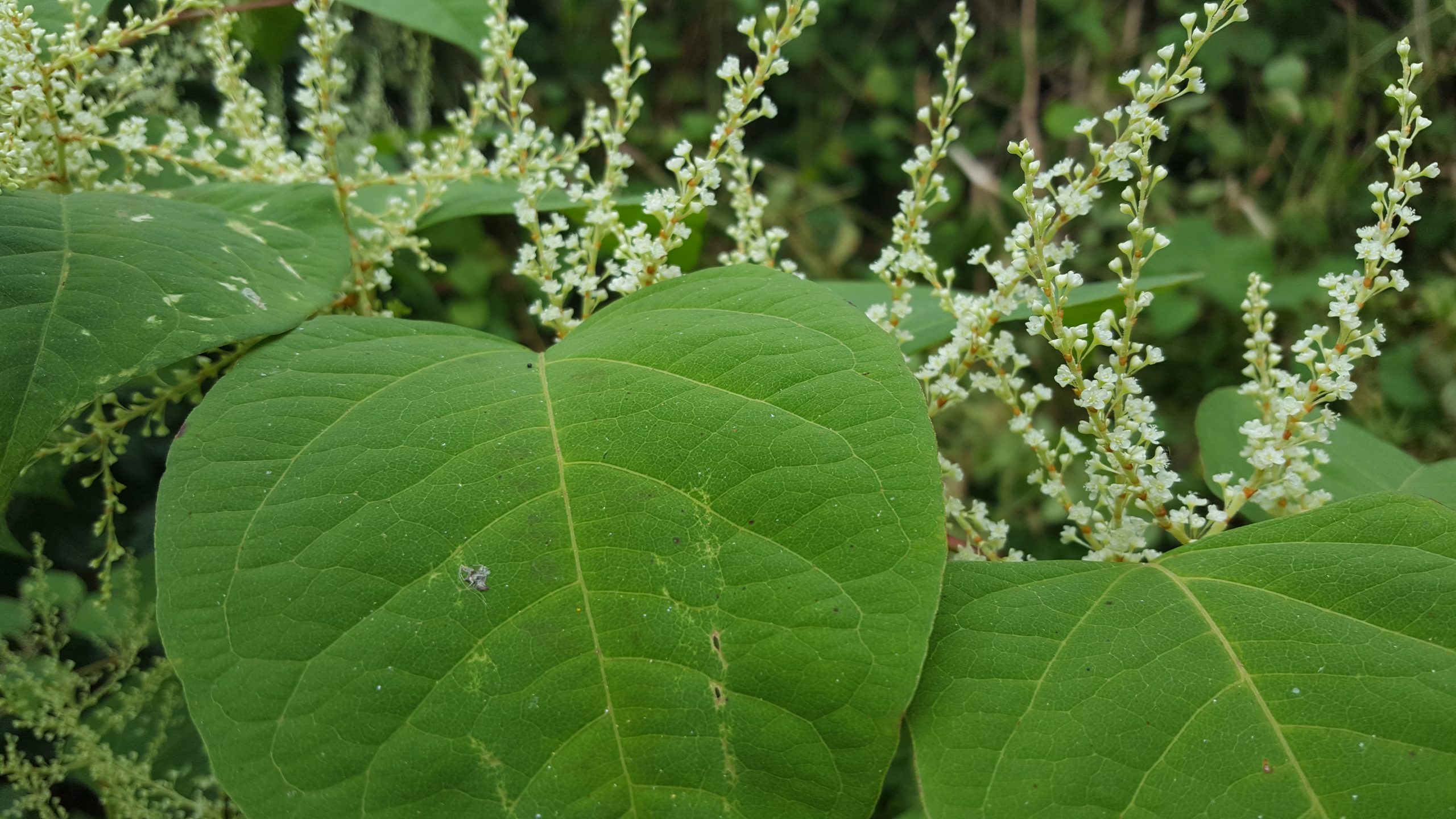
In summer Japanese knotweed has a distinctive flourish or small creamy-white flowers that grow in small clusters along a vertical stem. From a distance these may not look like flowers, so it’s important to get up close to clearly identify the flower (as image below shows):
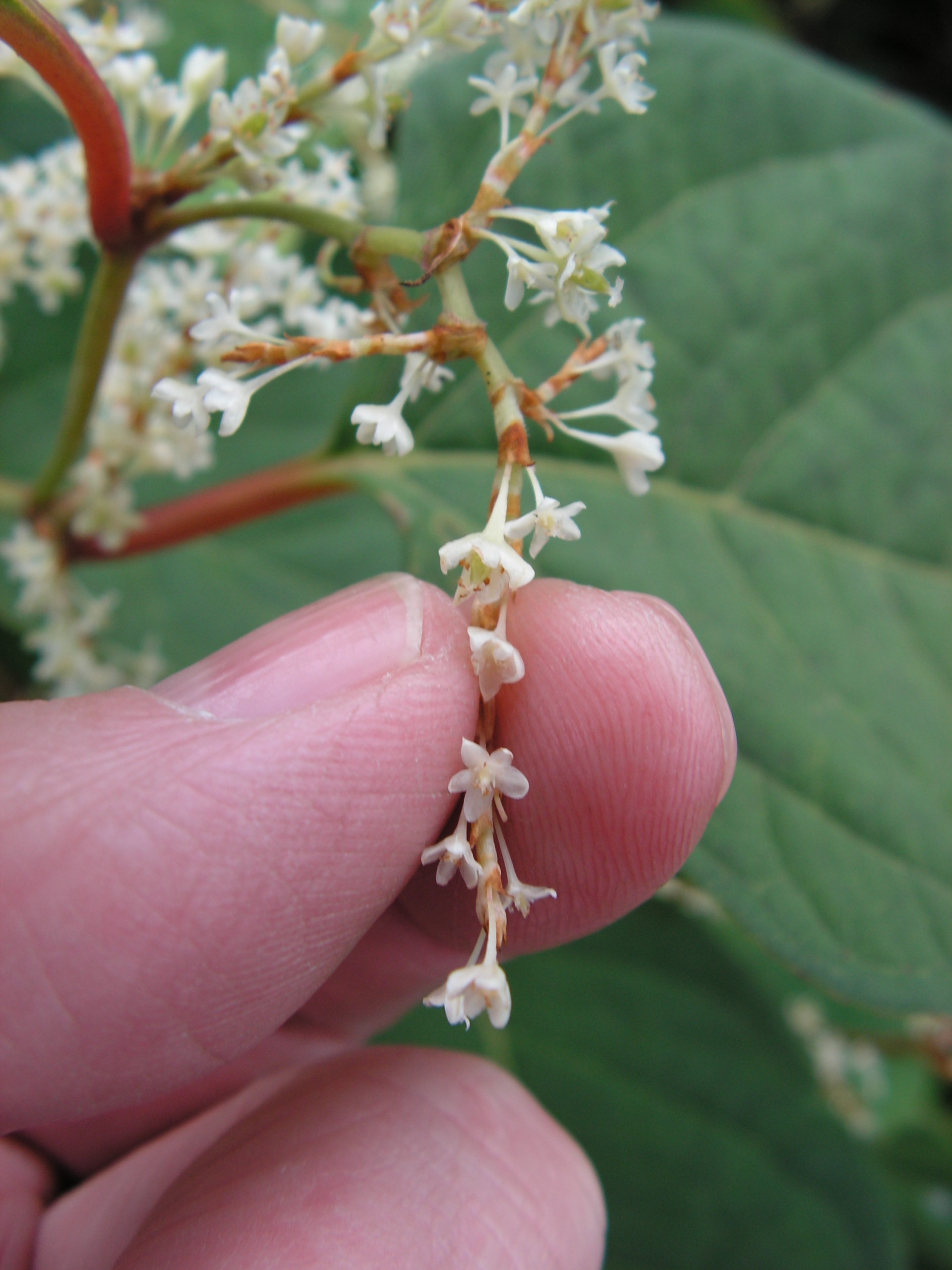
Knotweed leaves
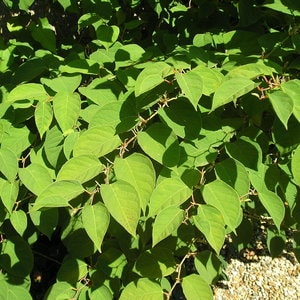
In summer the leaves of Japanese knotweed are a particular hue of green, which is often referred to as ‘knotweed green’. The distinctive knotweed zig-zag pattern is also clearly visible when you look at the leaf structure. Below we show a typical leaf size and pattern – with individual leaves forming from red nodes along the green stem.
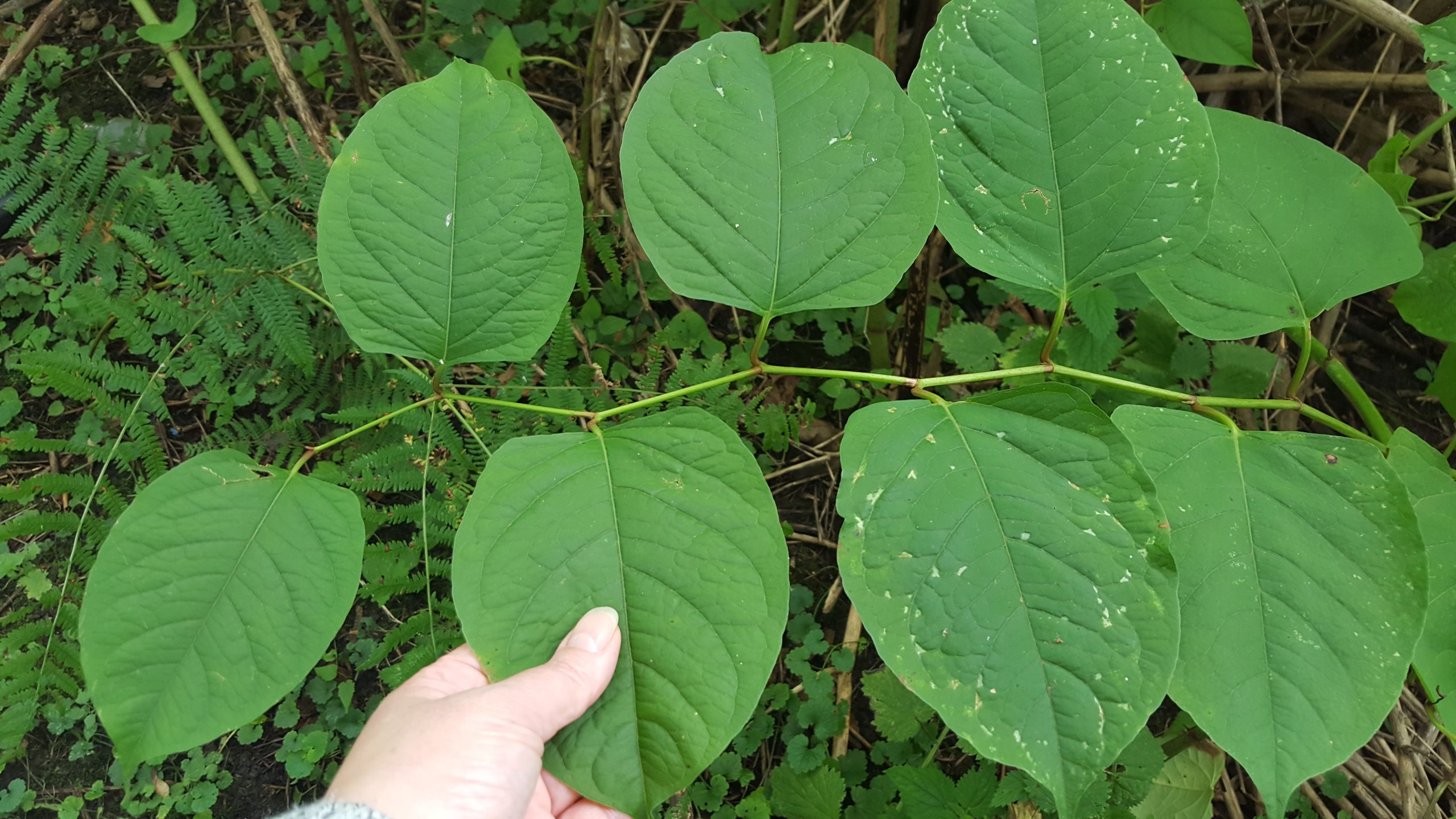
A complete guide to what knotweed looks like through the seasons is provided HERE.
Find out if you have knotweed close by
On your property
If you have Japanese knotweed on your property, you are responsible for controlling it. If you suspect knotweed is on your property or land you’ll need to have it correctly identified, and by far the quickest way to do this is to send us some photos online so our knotweed experts can tell you if it is knotweed (or not). Or you can book a survey so that one of our qualified surveyors can do an accurate assessment of the property and provide a full report on the findings. We’ll consult with you at every step of the way regards any resulting requirements for treatment (control) or removal options.
Near your property
If knotweed is on a neighbour’s property they are under no legal obligation to get rid of it, however if they allow it to spread from their property (either knowingly or not) it is an illegal offence, also termed as a ‘Nuisance Behavior’. In these circumstances, you should in the first instance aim to speak with the neighbour about your concerns as they may not be aware of the potential knotweed on their property. You should document any evidence of knotweed on your property and provide it in writing to your neighbour. This is termed ‘Giving Notice to Your Neighbour.’ and as long as this is done in an appropriate and considerate manner the problem should be resolved.
Your neighbour should consider effectively treating the knotweed both on their property and yours in order to solve the problem and ideally the remedial action they choose should include a suitable guarantee.
You can contact us for legal advice, plus we have partnered with a legal firm that specialises in knotweed cases.
So the best thing to do is be vigilant, and if you suspect knotweed don’t ignore it. We’re considered to be the leading authority on knotweed so you’re in very safe hands.
Your questions answered by experts:
We hope you’ve found this article useful, and do get in touch with the team if you have any questions.


